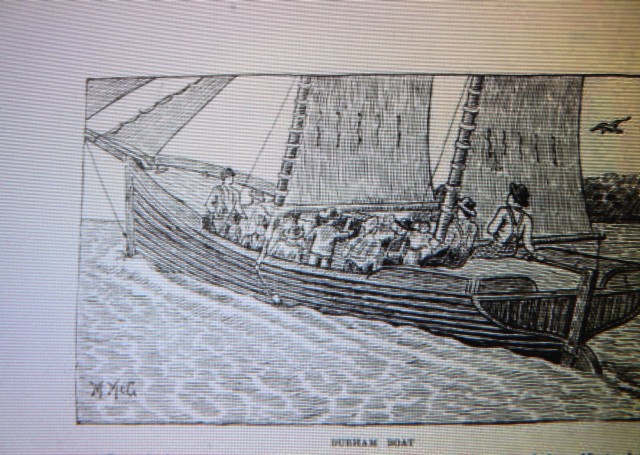In studying this family history I began to wonder how these pioneers traveled to Canada. Although we complain about our travels, it really is a piece of cake. Thomas Thornton was interviewed about coming to Canada and then to Ontario and here is a small excerpt
Thomas Thornton, father of C. J. Thornton, ex.-M.P., and one of the Thornton-Powers connection, also contributed to these Clarke reminiscences. Mr. Thornton, born in Yorkshire, as a boy of six came to Canada with his father in the ‘twenties of the last century. He was thirteen weeks and three days in crossing the Atlantic, and three weeks more were spent on the journey by Durham boats between Quebec and Montreal. “And,” 1[r. Thornton told me, as we sat on his porch in Orono, twenty-three years ago, “it rained on every one of those twenty-one days, save three.” That certainly was no pleasure trip for a boy of six. In 1835, while still a lad, Mr. Thornton went to live with Thomas Best on the eighth of Clarke. “On one occasion,” he said, “when we required to have some wheat ground, and having no horse of our own, it was necessary to pack the grain to a neighbour’s place. We divided it into four bags, and Best and I carried two bags for a distance and then went back for the other two, and so on, each carrying two bags alternately until we had covered the two miles between our place and Bill Livingstone’s. Then Bill teamed the grain to Bowmanville to be ground for us. At that time there were only three horses in the township north of the sixth concession.
“When Mr. Best first moved to his farm, his worldly possessions consisted of three pigs, an axe, and what he considered sufficient pork, flour, and potatoes to see him through until next harvest. During the following May he began to fear that, pork and potatoes were going to run short and he decided to apportion what remained to make sure of having at least some for each day until a new supply came in. He weighed a pound of pork, cut it into slices, counted the slices and from this calculated how many slices per day his remaining stock would allow him. Next he filled a half-bushel measure with potatoes and counted the number of potatoes per day he could afford for each meal. In this way he managed to keep up a daily supply until new sources were available. In order to hasten the fattening of the pigs I had to go to the bush and hunt cow cabbage to feed them. And I assure you fattening the kind of pigs we had then, by the means described, was no picnic. The pigs were of the kind that required a knot in their tails to prevent them from slipping through a hole in the fence. [Copied from Pioneers of Old Ontario, by W. L. Smith 1923.
Here is a photo of a”Durham Boat”, mentioned by Thomas.
Then there was the trip from Montreal to Port Hope. The presence of rapids made this a difficult trip as well. They traveled by raft with each person entitled to load 200 pounds of goods, but they often had to transfer to a stage coach to get around the difficult waters. the entire trip may have taken 2.5 to 3 months to complete. And then there was the problem of clearing the land, building a house, etc. The Thornton family and the Simpson family traveled in this manner landing in Port Hope and settling in that area prior to moving to Clarke township.
Here is a short excerpt from Mary Ann Thorton describing life in the bush (yes Durham County was heavily treed).
At one time the Bests went nine weeks without seeing another living person. Their nearest neighbor was Nathaniel Powers of Kirby. There was a foot path through the woods marked by a blaze on the trees. When Mr. Best first came to his farm his worldly possessions consisted of three pigs, an axe, beetle rings and what he considered sufficient pork, flour and potatoes to see he and his wife through until the next harvest. (From: Out of the Mist: A History of Clarke Township, p.24)
And here is a second, taken from her obituary.
Enduring the hardships incident to the early settlers they eventually secured a competence and lived to see the wilderness transformed into a flourishing agricultural district dotted with churches and schools. Their nearest neighbour for some time was the family of the late Nathaniel Powers at Kirby, about two miles distant, the only road being a foot path through the bush marked by the “blaze” on the trees. At one time she and her husband were nine weeks without seeing a living person except themselves, when Mr. Powers, fearing the bears or wolves had killed them, went to see and was glad to find them well. (Orono News, April 13, 1889)

